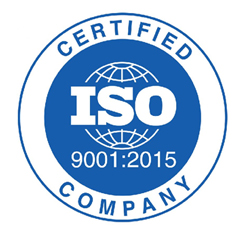7 Phases of the System Development Life Cycle Guide
Then, they iteratively enhance versions over time until the complete software is ready for production. In SDLC, documentation is crucial, regardless of the type of model chosen for any application, and is usually done in parallel with the development process. Some methods work better for specific kinds of projects, phases of system development life cycle but in the final analysis, the most crucial factor for the success of a project may be how closely the particular plan was followed. Regardless of the process implemented and the tools used, all require the crucial element of documentation to support findings, close iterative phases, and to analyze success.
This work includes the specification of interfaces between the system and its intended environment, and a comprehensive evaluation of the systems logistical, maintenance and support requirements. The detail design and development is responsible for producing the product, process and material specifications and may result in substantial changes to the development specification. The phases of a evelopment life cycle process are determined by the size and aims of the project. In most situations, each development team develops its software development cycle or uses one of the models we’ll go through later. The importance of the software development cycle comes first in any software development process.
Stage 3: Design
The big step is creating a detailed project plan document and work breakdown structure that outlines the requirements. System Design is a critical stage in the SDLC, where the requirements gathered during the Analysis phase are translated into a detailed technical plan. It involves designing the system’s architecture, database structure, and user interface, and defining system components. The Design stage lays the foundation for the subsequent development and implementation phases. The requirement documents include specific fields, diagrams, pie charts, tables, and detailed descriptions of each requirement during the software development lifecycle.
As a multilayered role, the Project Manager is in charge of managing and overseeing the end-to-end SDLC effort, allocating resources and handling other operational tasks such as financials, planning, and more. They are typically tasked with selecting the right project management methodology with full ownership of the methodology components. By having the product emulate expected behavior on a small scale and in a controlled environment, it’s easier for developers to visualize components to ensure the software solves the needs it was designed for.
Analysis Stage
Behavior-driven development, which uses testing outcomes based on plain language to include non-developers in the process, has become increasingly popular. Ready to maximize the efficiency of your systems development life cycle? Before starting development on a new system, it’s critical to understand how an SDLC will fulfil the overall requirements and help achieve the best result. Choosing the correct SDLC can assist you in swiftly and successfully developing the system you require.
- It’s very common for the project teams to use UML diagrams in the design phase to design the system’s architecture.
- These days, many people are successfully pivoting or switching their careers from education, the service industry, and more to coding and development.
- During the fifth phase the system is installed in the production environment.
- The systems development life cycle is a term used in systems engineering, information systems, and software engineering to describe a process for planning, creating, testing, and deploying an information system.
- Users will face issues that were not discovered during testing at this time.
A software requirement specification, or SRS document, is frequently created by developers. This document contains all of the software, hardware, and network specifications for the system they intend to create. When working in the same location as other development teams, will prevent them from overdrawing cash or resources. The abbreviation SDLC can sometimes refer to the systems development lifecycle, the process for planning and creating an IT system. The system typically consists of several hardware and software components that work together to perform complex functions. The iterative process suggests that teams begin software development with a small subset of requirements.
Systems Development Life Cycle (SDLC) Model
This step involves decomposing the system into pieces, analyzing project goals, breaking down what needs to be created, and engaging users to define requirements. During this stage of the system lifecycle, subsystems that perform the desired system functions are designed and specified in compliance with the system specification. Object-oriented analysis and design https://www.globalcloudteam.com/ (OOAD) is the process of analyzing a problem domain to develop a conceptual model that can then be used to guide development. During the analysis phase, a programmer develops written requirements and a formal vision document via interviews with stakeholders. During the Analysis stage, the focus is on gathering and understanding the requirements of the system.

Rigorous testing and quality assurance are performed to ensure the system’s accuracy, performance, and adherence to the design requirements. In essence, the Agile approach puts a higher value on tasks that promote interaction, build frequent working versions, customers/user collaboration, and quick response to change and less emphasis on processes and documentation. The agile methodologies’ goal is to provide an iterative approach’s flexibility while ensuring a quality product.
What is SDLC?
They are experts at studying a system, process, or procedure to come up with the best solutions. It’s dynamic, adaptive, flexible, lightweight, and extremely responsive, working in sprints with a defined time period to complete small and highly manageable tasks, thus reducing the time in which software goes live. Through and through, Agile is an advocate of adaptive planning, evolutionary development, continuous improvement, responsiveness, flexibility, and quick delivery. RAD’s development model was first conceived back in the 80s to solve the need of developers looking for a more effective solution than the traditional Waterfall. One of the biggest faults of the Waterfall methodology, and one that most developers complain about, is the complexity to change core functions and software features. In RAD, the development evolution is continuous and flexible to suit changing business needs, which is a must in today’s modern environment.

These design documents are designed to provide enough information about the software so that product designers may create it with minimum help. This model is suited for small teams who work to produce a set of features within fixed-time interactions, such as two- to four weeks, called sprints. Let’s walk through the four key elements of a Scrum model as depicted in Fig 10.4. Scarce resources as developers are tied up, which could slow down other projects.
How does SDLC compare with other lifecycle management methodologies?
It is more commonly used for large scale projects with many developers. Once a system has been stabilized through testing, SDLC ensures that proper training is prepared and performed before transitioning the system to support staff and end users. Training usually covers operational training for support staff as well as end-user training. This may involve training users, deploying hardware, and loading information from the prior system. During this phase of the Software Development Life Cycle, Developers use an Access Control or Source Code Management program for keeping track of code modifications.

” Here are some signs that this career path might be one that you will enjoy. In systems design, functions and operations are described in detail, including screen layouts, business rules, process diagrams, and other documentation. Modular design reduces complexity and allows the outputs to describe the system as a collection of subsystems. During this step, current priorities that would be affected and how they should be handled are considered. A feasibility study determines whether creating a new or improved system is appropriate.
Importance Of Systems Development Life Cycle
This means it is important to evaluate the life cycle of the different systems in the business and analyse whether the systems are worthwhile implementing. Before any of the stages of SDLC are run in a company, it is crucial to first evaluate the benefits of the system. From there, the business systems analyst can look into conducting the first stage of the systems life cycle.


Leave a Reply
Want to join the discussion?Feel free to contribute!